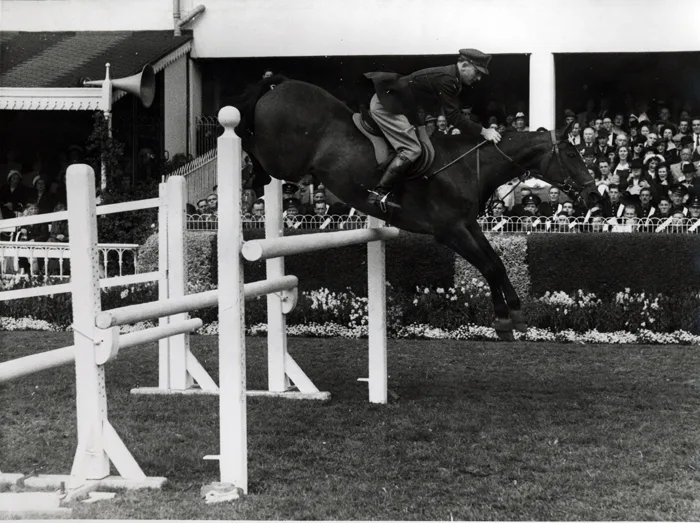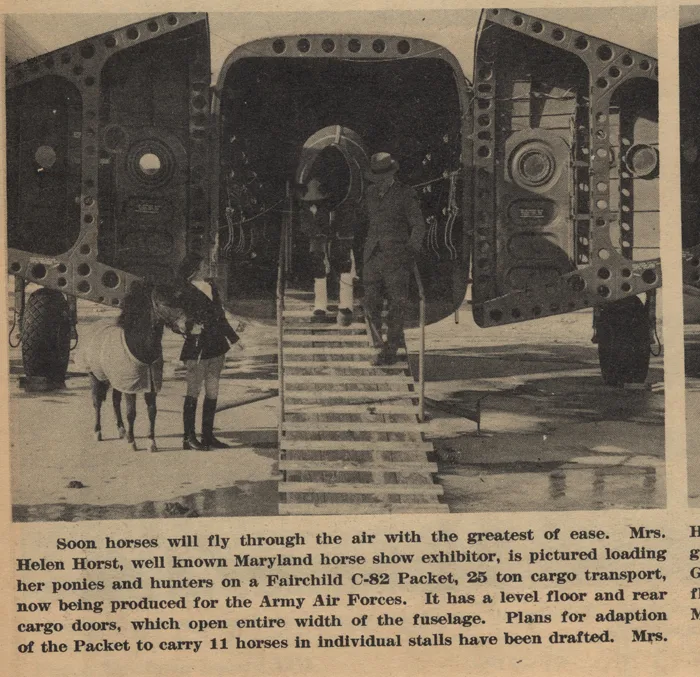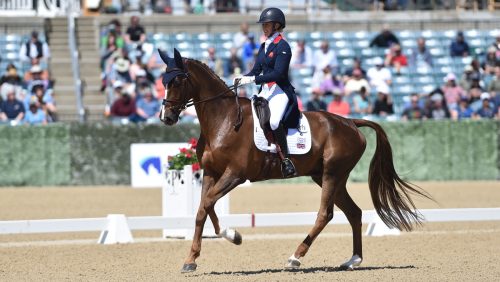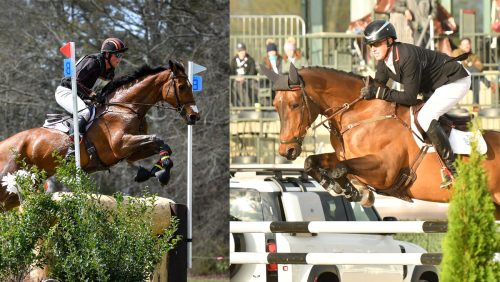The Chronicle of the Horse is celebrating its 85th birthday in 2022. For the next eight weeks, leading up to the publication of our 85th Anniversary Issue, we’ll bring you a decade-by-decade look at the history that has filled its pages since 1937.
The Chronicle of the Horse was first published on Sept. 17, 1937, as The Middleburg Chronicle, in a tabloid size format. It was printed locally in Berryville, Virginia. While it largely focused on the Middleburg horse scene, it grew to cover the entire country. In the early years, flat racing, steeplechasing and foxhunting dominated the pages. The subscription price started at $2.50, but hovered at around $3.50 for much of the 1940s.
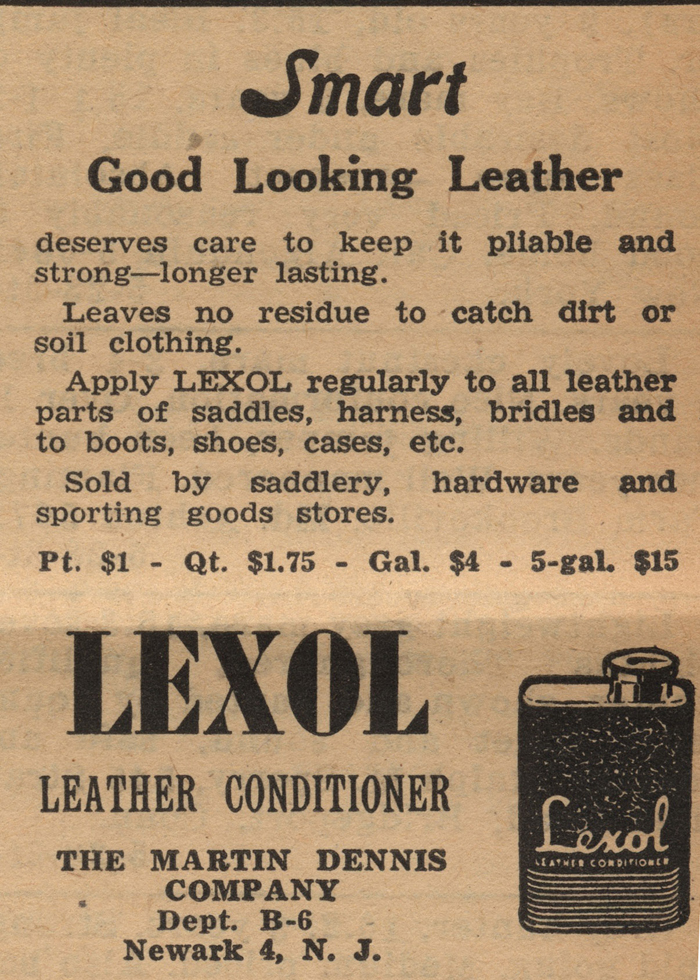
Do you recognize this brand?
First Principles
The magazine’s mission statement was front and center in the first issue:
“Middleburg is a name whose influence is not confined to the environs of its country or even its State. It is a name that stands for sport, for the great institution which is the horse, for a great farming and hunting community that is known in the far away places where men and women have penetrated to carry with them the traditions that lie behind the annals of sport in the United States.
“Realizing the significance of the unique position which this community occupies, the editors of the Chronicle wholeheartedly assume the task of publishing Middleburg’s newspaper. The first issue and succeeding issues are dedicated, therefore, not alone to those who have always made this part of the country home, but also to those who have come only to enjoy for a few moments the pleasures of a famous countryside and then to depart to carry with them in their hearts a fragment of what they do here as a happy remembrance until they come again. The Middleburg Chronicle is, accordingly, a local newspaper which has the good fortune to be able to list in its pages the activities of a sporting nation and still remain local in scope.
“The great circumference of this portion of Virginia includes the largest horse breeding industry in the United States, it encompasses the most famous fox hunts in the country, here are the oldest shows and here is the home of the thoroughbred. It is in this field that the Chronicle takes its initial step. The paper intends to inscribe in its pages the history of a famous community. It is here to work towards civic improvement, it is here to work for the good of all. The Middleburg Chronicle is an enterprise which asks the cooperation of everyone interested in this countryside.
“In its devotion to the welfare of the people, their farms and their horses, the Chronicle seeks to place itself where it will not move forgotten or unheeded. The editors need the support of all, so that its pages may provide interest, amusement, and the news of a nationally known community, impartially and without prejudice.”
An Eventful Beginning
ADVERTISEMENT
The Middleburg Chronicle began as a local newspaper in Virginia hunt country and carried on production during World War II. Early editions featured commentary on President Roosevelt, the scandal of King Edward VIII abdicating his throne to marry Wallis Simpson, and Congressional hearings.
At the time, horse racing was one of the most popular sports in America, and the magazine had pages of coverage from tracks around the country. Between 1937 and 1948, five Triple Crown winners were named, and the Chronicle covered all of them (except War Admiral’s 1937 victory, which happened a few months before the magazine started publishing).
Many issues that arose during the Chronicle’s first 13 years mirror topics we’re still debating today. The importance of local shows and animal welfare were on the minds of many equestrians.

The note on the back of this photo reads: “You might want to keep this in your files as everyone predicts both rider and horse will be way out in the season’s showing for Championships for 1948.” Photo by Cardell.
While the 1940 Tokyo Olympic Games and the 1944 London Olympics were canceled, the Chronicle covered the 1948 edition in London, where the United States earned three medals: team silver in dressage, team gold in eventing, and Frank Henry and Swing Low captured the individual silver in eventing. (Henry was also a member of the dressage team on Reno Overdo.) Thomas Clyde reported for The Chronicle on the Prix de Nations show jumping final.

Capt. Russell competed Air Mail at the 1948 Olympic Games.
By the late 40s, talk of amateurs and women competing in the Olympics spread through the Chronicle’s pages. While the nation struggled to decide who would represent them once the Army teams were disbanded, the magazine offered opinions and suggestions from top coaches, riders and industry leaders.
Remember When?
– The Town Crier section was on the first page and included gossip from the local horse scene, as well as announcements about horse show dates, elections to equine organizations and news about top horse sales.
– The Horseman’s Notes included more news and opinions from around the horse world, much like today’s In The Country section.
– The Chronicle had a comprehensive Hunting Notes section in each issue with news from local hunts such as Warrenton, Blue Ridge, Orange County and Piedmont.
ADVERTISEMENT
– A special section called Pork Pie featured recipes for everything from almond cream to broiled salt mackerel to corn bread.
– Columns on gardening and farming offered advice to readers on everything from the disadvantages of surplus crops to how to start a garden.
– In The Country read like a gossip column, with announcements, rumors and reports of horsemen and wealthy families.
Examples:
- “The Paul Mellons, feeling that the weather couldn’t last which for three months has been so perfect for the best hunting and scenting conditions, the best over a period of time in years, got a head start on the 1-2 inch snow fall of last Tuesday morning, and settled in Pullmans for Florida on Sunday.” Jan. 14, 1938
- “Mr. Jock McLean was omnipresent and conspicuous at the Baker-Emerson long lasting Long Island party wearing a beautiful mink cape under his dinner jacket. It was so cold you had to keep Big Appleing to stay warm. He outfitted himself with his fiancée’s cape, and the effect was amazing, like a fur lapelled jacket.”
- “One of the latest candid-camera-graphers is State Officer Tom Stafford. He doesn’t fool with any miniature stuff. He goes after the post card size, and gets his man and pictures, too.”
– Sporting art began to grace the cover in 1945.
– The Casualty List reported on injuries and illnesses. Here are some of the best:
- “Mrs. Daniel Sands, suffering from a troublesome ankle.”
- “Louis Duffey, suffering the pangs and pains of a tooth extraction.”
- “The Chronicle’s Car, a flat spin on ice and it went almost deep sea fishing in Millwood Run last week. It is on the mend at Warrenton Supply after having been retrieved nobly by Burch’s Garage.”
- “Hubert Phipps’ pick-up truck, couldn’t out talk a Chesapeake and Potomac Tel. Co. pole.”
- “Mrs. Raymond Belmont and Miss Winnifred Maddux both down with the grippe, sort of feeling rocky for Christmas.”
– In the early years of the magazine, photos were not prominently featured in ads or stories. The back page of the magazine featured a few in a section called Candid Picture News. By the mid-40s, more photos popped up in the pages.
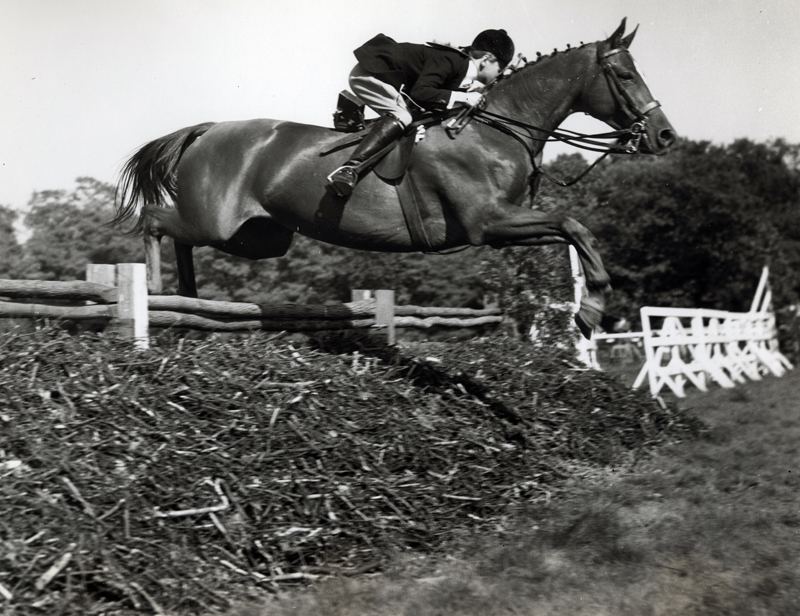
In 1949, Alice Rock, owned and ridden by Miss Mimi Mills, was the junior hunter champion at the 44th annual Piping Rock Horse Show on Long Island, N.Y. Photo by Carl Klein
– These classifieds likely wouldn’t be seen in today’s magazine.
- Position Wanted: “British officer, lately retired after 18 years service in Indian Cavalry (13th Duke of Connaught’s Own Lancers) seeks situation as riding instructor with riding establishment, college, school or family. Highest references.”
- Help: “Gardener. Groom. Scotch or English preferred. Four Horses. Some children, driving, lawn and flowers. Pleasant cottage. Steady, sober, mature, married. Wife to help occasionally.”
- Horses: “Made to go on with. Handsome brown Thoroughbred gelding, 15.3, 10 years. Brilliant performer in the field, light mouth, absolutely sound. Hunted regularly by a lady; delightful hack. $500 for immediate sale.
- Lost: One spur.
– The advertisements in issues from the early years of The Chronicle featured more service ads for local businesses in the Washington D.C. metropolitan area, as well as Middleburg businesses. Car service shops, landscaping, insurance, lighting, whisky, meats and even dead animal removal ads were scattered throughout the 15-or so pages of each issue. Many ads would look familiar today, such as stallions at stud, the latest fashions, tack stores and real estate.
Read about all the decades of the Chronicle: the 1930s and 1940s | the 1950s | the 1960s | the 1970s | the 1980s | the 1990s | the 2000s





